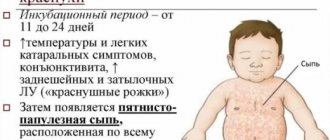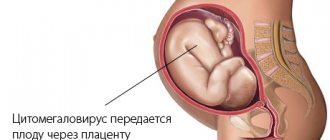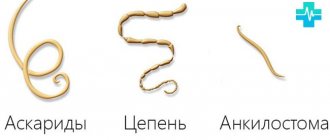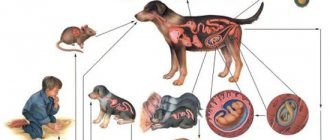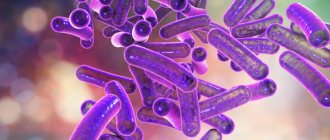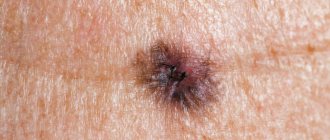Helminths are multicellular living organisms belonging to the class of parasites. In other words, to meet their needs and function fully, they need another organism. When infected with them, helminthiasis or helminthic infestation is diagnosed. The exact name of the disease depends on the type of parasite that has entered the body.
There are more than 250 major species of human helminths
How do you get infected with helminths? There are several main routes of infection by worms:
- drinking raw water contaminated with parasite eggs;
- eating poorly processed meat and fish products;
- eating unwashed fruits, vegetables, herbs;
- contact with infected people and animals;
- contact with the soil.
Important. Factors contributing to helminthiasis infection are non-compliance with hygiene standards, poor living conditions, dirt and dust in the house and on the street.
Life cycle of some helminths
Types of helminths and their characteristics
There are a huge number of helminths, so there is a separate classification of them. Since helminth infestations are a problem for modern people, you should know what they are and how you can become infected with them:
- Contact . They can be infected through the fecal-oral route or after contact with people, animals and objects contaminated with worm eggs.
- Biohelminths . Several intermediate hosts change throughout the life cycle. A person can become infected, for example, by eating the meat of an infected animal.
- Geohelminths . Capable of developing without an intermediate host. Infection occurs after contact with contaminated soil or contaminated objects.
Characteristics of biohelminths
Helminths are also divided into three groups, depending on the characteristics of their structure:
- roundworms (nematodes);
- tapeworms (cestodes);
- flukes (trematodes).
Note. Tapeworms and flukes are combined into a common group - flatworms.
Roundworms
Nematodes have the greatest diversity of representatives. Their body is predominantly thread-like. At the same time, male and female individuals are distinguished, although there are also hermaphrodites. On average, sizes can vary from a few millimeters to 50-100 cm.
The group of roundworms includes:
- roundworms;
- pinworms;
- trichinella;
- whipworms;
- toxocara;
- Trichostrongyloididae;
- hookworms;
- intestinal acne;
- nekators.
Male and female human roundworm
Signs of helminth infection in humans manifest themselves in the form of abdominal pain, itching in the anus, intestinal disorders, and a general deterioration in health. Sometimes inflammation can spread to the genitals, especially in women.
Tapeworms
During their life, cestodes change hosts, that is, they belong to the category of biohelminths. Accordingly, infection with tape-type helminths can occur after consuming low-quality food, as well as due to an insect bite infected with eggs or larvae of the parasite.
Tapeworms include:
- bovine tapeworm;
- pork tapeworm;
- wide tape;
- rat tapeworm;
- dwarf tapeworm;
- dog worm;
- alveococcus;
- echinococcus.
Wide tapeworm, the source of infection of which can be fish
Note. The most common parasites are tapeworms. They can grow to enormous sizes and significantly affect human health. In addition, their structure implies reproduction by tearing off individual segments from the body, which complicates the fight against them.
Flukes
Trematodes begin their life cycle primarily with an invertebrate host. They are the smallest of the parasites and have a flat body shape.
- Chinese fluke;
- cat fluke;
- nanophyetus;
- flukes (liver, pulmonary, ciliated, lanceolate, etc.);
- Metagonimus.
Liver fluke
Diseases in humans due to helminths of this type can occur in a latent form for a long time .
Nevertheless, the problem cannot be ignored, since trematodes are capable of disrupting the natural processes in the host’s body for decades and destroying it from the inside.
How are worms transmitted and where do they come from?
Helminths are parasitic worms.
Helminth infections are chronic parasitic diseases that affect many human organ systems. More than 250 species of worms are known, in the Russian Federation there are about 90 species. Infection and transmission of parasites depends on the type of worms, the characteristics of their activity and life cycles.
Read more about the types of helminths.
OUR READERS RECOMMEND!
Our readers successfully use Intoxic to get rid of parasites. Seeing how popular this product is, we decided to bring it to your attention. Read more here...
How dangerous are worms to humans? Worms in humans cause damage to those organs and systems that they, the larvae or their eggs use for their vital functions.
Classification of helminths
Common helminthic infestations include diseases such as ascariasis, taeniasis, teniarinchiosis, enterobiasis, echinococcosis, caused by parasitic worms. Taking into account the morphological and anatomical features, there are flat and round worms:
What types of worms do humans have based on localization?
- intestinal;
- extraintestinal;
- fabric.
According to the type of life cycle, geo- and biohelminths are distinguished:
- Geohelminths have only one host, but the eggs and larvae need to stay in the ground.
- Biohelminths need a change of hosts - intermediate and final.
Various human worms use both definitive and intermediate hosts. The second option is more dangerous: after hatching from the egg, the worm can travel through the bloodstream to such vital organs as the heart, brain, eye, causing severe pathologies or death.
Routes of infection by parasitic worms
Many people are concerned about how worms get to people, how one can become infected with worms, and how worms are transmitted. Main routes of transmission:
- food;
- water;
- autoinfection;
- contact and household;
- transmissible.
Food route of infection
Meat should always be carefully inspected for eggs of bovine tapeworm.
The food route of infection is the most common, mainly associated with non-compliance with personal hygiene rules or violation of the technology for preparing meat and fish dishes.
The way roundworms enter the body is through hands contaminated with soil, unwashed vegetables and fruits, and berries. Where do helminths in the soil come from? The source of eggs in the soil is the feces of people with ascariasis. Eggs in the ground retain their viability for a long time and, under favorable conditions, penetrate the body.
The likelihood of infection increases where the main fertilizers are human feces contaminated with roundworm eggs.
What to do to avoid getting infected? Make friends with water. After gardening work, wash your hands thoroughly. Wash berries, vegetables and fruits, despite their apparent cleanliness.
It is important to know! Doctors are shocked: “An effective and affordable remedy for PARASITES exists...” Read more…
Thorough processing, washing hands, vegetables and fruits is the prevention of helminthiases.
Tapeworms (flat, long) worms enter the human body as larvae found in meat.
Infection with bovine and pork tapeworm occurs when eating insufficiently cooked or fried meat, or testing raw minced meat.
In the human body, worms emerge from the fin and after a while turn into a sexually mature individual that lays eggs. The worm produces up to several hundred thousand eggs per day. What to do to avoid getting infected?
Basic preventive measures
- Buy fish and meat semi-finished products (minced meat), whole meat or fish only from trusted sellers.
- When purchasing, pay attention to whether the products have passed veterinary control.
- Carefully inspect the meat and liver for the possible presence of Finnish worms.
- Subject products to thorough cooking.
- Wash all kitchen utensils (boards, knives, tables).
- Protect products from flies, whose legs can carry worm eggs - sources of helminthic infestation.
Some worms can infect humans not only at the larval stage, but also at the egg stage. Worms that develop from pork tapeworm eggs in the human body are dangerous.
Worm infestation in adults caring for these animals develops when a person with dirty hands ingests worm eggs. The worms emerge from the egg, develop, and turn into worms.
https://www.youtube.com/watch?v=dTzR4NkPttw
Finna is the larval stage of tapeworms, which is a vesicle containing the head and neck of the parasite. You can avoid helminthic infestation only by observing hand hygiene.
Water route of infection
Occurs when swallowing or drinking water that contains worm larvae or eggs. Where do worm larvae in water come from? Many parasitic worms, for example, the liver fluke, have an intermediate host - a mollusk, in whose body the larval stages develop.
The larva can develop into an adult worm only in the body of cattle or humans. Having reached a certain stage of development, the worms (larvae) emerge from the body of the mollusk, float for some time in the water, attach to aquatic plants, encyst and wait in the wings.
As soon as an animal or person swallows water or chews a blade of grass, the cysts penetrate the digestive system of the final host - a helminthic invasion has occurred.
[ads-pc-1]What to do to avoid helminthic infestation? In the fairy tale about sister Alyonushka and brother Ivanushka it is said: “Don’t drink water, brother, from a hoof you will become a little goat.”
It’s relevant, but a person won’t become a baby goat, but after drinking water from a river or lake, he can swallow cysts - a source of helminthic infestation. This is why you should not drink raw water from rivers, lakes, and ponds.
What to do to avoid becoming part of the worm's life cycle:
- Carry a supply of clean drinking water with you.
- Boil water taken from a river or pond.
- Purchase a special camping filter for water purification.
Autoinfection
Children can often become infected in kindergarten
More often typical for children. The reasons are the child’s insufficient compliance with personal hygiene rules.
Young children, especially in kindergartens, do not always wash their hands thoroughly after using the toilet, so helminthic infestations are a common companion for preschool children. In children, helminthic infestations include enterobiasis.
How do worms (pinworms) appear in the large intestine? Pinworm eggs are very light. They are picked up by air currents, fall on children's toys, furniture, dishes, beds, and are carried into the child's body with dust.
Worms, having reached sexual maturity, crawl onto the walls of the anus to lay eggs. This causes unbearable itching, especially at night; the child scratches the walls of the anus and brings helminths into the mouth with dirty hands. The cycle of infection repeats.
Read more about pinworm transmission.
What to do to avoid helminthic infestation:
- Wash your hands with soap.
- Carry out wet cleaning of premises.
- Wash or wash toys.
- Change children's bedding and underwear more often.
- Keep your nails short to prevent dirt from accumulating underneath them.
Contact and household route of infection
Helminthic infestations in humans are possible through household contact - mature eggs containing larvae fall on hands through household objects and animal hair. So, the infected person is not always the carrier.
Some parasite eggs need to undergo development outside the host organisms.
Being on the ground, household items, hands contaminated with soil, eggs with developing larvae can enter the human body and become a source of disease.
According to statistics, about 70% of the world's population had or have a helminthic infestation, and more than half became infected from domestic animals.
No matter how clean a pet is, it can be infected with tapeworms or echinococcus.
In many animals, helminthic infestations are practically asymptomatic. A person may have nausea, vomiting, intestinal pain and headaches, loss of appetite and weight loss, dyspepsia, constipation, allergic manifestations, and helminthic colitis may develop. All these symptoms should alert a person.
Poisoning of the body can be caused by helminthic infestation.
How do these worms infect humans? When hugging, stroking, kissing, or playing with pets, there is a possibility of transferring worm eggs into the body of a child or adult. Echinococcus is especially dangerous for humans.
What is the danger of echinococcosis? The larvae of small worms, having entered the human body, form finna in the tissues, liver and other organs of the body. Finns sometimes reach very large sizes, compress organs, and disrupt their function.
The Finn with the larva can only be removed surgically.
Prevention
What to do:
- Wash your hands after interacting with animals, especially street ones.
- Carry out anthelmintic therapy for animals according to the scheme developed by the veterinarian.
- Periodically bathe animals with special cleaning liquids.
- Protect products from flies that carry worm eggs on their legs and become a source of helminthic infestation.
Transmissible route of infection
Filaria and heartworms are carried by certain types of mosquitoes. When bitten by insects, helminth larvae (thread nematode - roundworm) enter the human bloodstream.
The disease occurs in southern countries, but these helminthiases are also possible in the middle zone, for example, in the Ryazan and Moscow regions. At risk are people living near rivers, swamps, hunters, fishermen, and forestry workers.
Pathogen larvae can penetrate the eyeball and under the skin. Treatment is medicinal or surgical.
To treat or not to treat
Some doctors believe that all people have helminths. Maybe. But taking preventive or therapeutic medications on your own is strictly prohibited! Uncontrolled therapy can cause significant harm to your own health. You also need to be careful when using traditional methods of treatment.
There is a method for treating helminthiasis using a product such as kerosene. To drink or not to drink kerosene is an individual matter for each person, but doctors warn that kerosene is poison. If there is a suspicion of infection with worms, you need to take tests (blood, stool), consult a doctor for qualified help and treatment.
With properly prescribed therapy, worms leave the body.
A person can be infected by different worms, and different worms require different approaches. Knowledge of transmission routes and mechanisms of infection by worms is important for every person. They say that being armed (with knowledge) means being forewarned. Compliance with the rules for the prevention and treatment of helminthiases is the key to good and long health.
Read more about the treatment of worms here.
**************************************** **************************************** **************************************** ************ Judging by the fact that you visited our website, you or your loved ones have encountered parasites firsthand. Have you already studied tons of materials on the topic of parasites and their treatment? It is not surprising, because parasites are dangerous to humans. They feel good in our bodies, and the diseases they cause are extremely dangerous and can develop into a chronic condition.
- Bad breath;
- Skin rashes;
- Bags under the eyes;
- Insomnia;
- Headache;
- Lack of appetite;
- constipation or diarrhea;
- Stomach ache;
- Frequent colds;
- Chronic fatigue;
These symptoms will haunt you if you have parasites! But is it possible to defeat the infection without harming yourself? It turned out that parasites are terribly afraid of simple tea. .. ***************************************************************************************************************************************************
Source: https://parazitipro.ru/gelminty/kak-peredayutsya-glisty.html
Distribution in humans
Signs of helminthiasis in adults depend on many factors: the type of parasite, the number of individuals, the degree of development of the human immune system, the presence of favorable factors for development and reproduction, etc. One of the important aspects is the location of localization.
Important. Some adult worms are able to move independently using hooks and suckers, as well as developed muscles. Eggs and larvae primarily migrate throughout the host's body by entering the bloodstream.
Parasite larvae can spread throughout the body in the bloodstream.
Helminths can affect the following organs:
- small and large intestines;
- appendix;
- spleen;
- liver;
- bile ducts;
- pancreas;
- lungs;
- heart;
- eyes;
- subcutaneous fat;
- brain.
Important! They can disrupt the integrity of blood vessels, causing internal bleeding and the development of anemia.
While in the internal organs, worms provoke the formation of cysts containing larvae . After their rupture, bleeding occurs, and the larvae spread further throughout the body. There are cases when cysts reached a volume of 5-6 liters and a weight of up to 10 kg.
Types of worms
There are about 200 classes of worms that can infect the human body, but fortunately, only the 20 most common species live in our territory. Let's look at the most common types of worms:
- Pinworms are small, round, thin worms, grayish-white in color.
- Roundworms are large yellow worms that grow up to 40 cm.
- The whipworm is a round parasite, 30-50 mm in size.
- The broad tapeworm is a tapeworm that can reach 10 to 20 meters.
- Hookworm - round worm, 10-15 mm.
- Trichinella are roundworms 2-5 mm.
- The liver fluke is a flat-shaped worm that is approximately 7-20 mm.
- Pork and bovine tapeworm - grows up to 6 meters, tape parasite.
- Echinococcus is a tapeworm, 3-5 mm.
- Alveococcus - similar to the previous species, the sizes are the same.
But to ruin our lives and harm a healthy person, even those parasites that are usually found in everyday life will be enough.
Characteristic symptoms of invasion
Symptoms of helminthiasis in adults manifest themselves in different ways. The most common signs of infection can be identified:
- weakness;
- nausea;
- cough;
- headache;
- irritability;
- bowel disorders;
- weight loss;
- pale skin;
- foreign body sensation;
- an allergic reaction without the obvious influence of a potential irritant;
- skin itching;
- joint pain;
- muscle weakness, cramps;
- enlarged lymph nodes;
- urinary disturbance;
- stomach ache;
- flatulence.
The activity of helminths provokes the development of anemia
In some cases, in the presence of helminths, the temperature rises, which is associated with the development of the inflammatory process.
Small nematodes, such as pinworms, cause severe itching in the anus. This is because the females come out to lay eggs. Small worms can often be found in stool. Parts of flatworms, in particular tapeworms, are also found in feces. This way it ensures reproduction and spread beyond the boundaries of a single host organism.
How does a person become infected with helminths?
An estimated 819 million people worldwide are infected with helminthiasis. Infection tends to be most common among rural residents who live in warm, humid equatorial regions where sanitation is not given much attention. A huge number of people infected with this disease die every year. Therefore, doctors from all over the world urge the inhabitants of the planet to regularly carry out diagnostics and check for the presence of worms in the body. After all, timely treatment therapy will relieve unwanted complications.
Schistosomiasis is diagnosed in 70 countries, where more than 200 million people are infected. Most of them live in poor communities without drinking water or personal hygiene. An estimated 90% of those infected live in sub-Saharan Africa, where up to 20 million people suffer from severe chronic diseases with severe health consequences. According to recent estimates, 3.3 million people are diagnosed with schistosomiasis.
Helminth infestation causes morbidity and mortality. This disease, in turn, compromises overall health. Naturally, the disease affects cognitive processes, causes tissue reactions and causes intestinal obstruction or rectal prolapse.
For obvious reasons, school-age children (including teenagers) become infected with intestinal worms and schistosomes quite often. As a rule, such children show reduced physical activity and grow poorly. In the presence of helminths, memory and concentration noticeably deteriorate. All these factors lead to a lack of education. Elimination of helminthiasis requires comprehensive treatment, improved sanitation and education of school-age children about personal hygiene.
Why are parasites dangerous?
Almost all helminthiasis diseases do not go away without leaving a trace. A favorable course is characterized by those invasions that do not affect vital organs and can be treated in a timely manner.
Note. Some of them can go away on their own if the adults come out and there is no re-infection with their eggs.
Parasites receive nutrients from their host, that is, they literally suck the juices out of it. Thus, the mucous membrane of organs and blood vessels is damaged, inflammation develops, and the body’s response provokes the development of an allergic reaction. The absorption and metabolism are disrupted, a person does not receive enough of the elements he needs.
Allergy is the most common reaction to the presence of parasites in the body
Worm infestations can provoke the following complications:
- decreased immunity and susceptibility to infectious and viral diseases;
- pneumonia;
- appendicitis;
- intestinal obstruction;
- blockage of the bile ducts;
- internal bleeding;
- Quincke's edema, or anaphylactic shock;
- peritonitis;
- endocarditis;
- anemia;
- visual impairment;
- brain damage;
- paralysis;
- abscesses.
In addition, many diseases have a chronic course and are characterized by frequent relapses. In especially severe cases, infection ends in death.
Decaris for the prevention of worms
The main active ingredient of the drug is levamisole. It is a broad-spectrum medicine used for preventive measures against enterobiasis, strongyloidiasis, ascariasis and other pathologies.
The advantage of Dekaris is its stimulating effect on the immune system, but it cannot be taken in high doses even in adulthood, since the medication can be very toxic.
For treatment, adults are recommended to take 150 mg of the active ingredient. The appointment is one-time only. For a stronger and longer-lasting effect, after 14 days you need to re-take a single dose of Decaris. During treatment, you do not need to take a laxative.
Broad-spectrum medicine Dekaris
Attention! If you have chronic kidney and liver diseases, as well as problems with hematopoiesis, you should definitely consult your doctor before using Decaris.
Diagnostics
The question arises: how to detect helminths in order to prevent the development of unpleasant consequences? Modern diagnostic methods include the following areas:
- general and biochemical blood tests;
- linked immunosorbent assay;
- microscopic examination;
- scraping from the perianal folds for helminth eggs;
- Ultrasound;
- tomography;
- X-ray examination.
To detect worm eggs, a scraping is taken from the folds of skin around the anus
Nonspecific anthelmintic prophylaxis
These preventive measures allow you to protect yourself from helminth attacks without financial costs.
This will require:
- Regularly observe hygiene standards: change bed and underwear in a timely manner, carry out water procedures, wash your hands with soap before eating (especially after visiting public transport, the bathroom and shops).
- Visit the beach in beach shoes. There are many helminthic larvae in the soil that get into the sand from animal feces and enter the human body through cracks in the legs. Even after walking on the beach in slippers, it is recommended to wash your feet with soap to prevent helminths from getting a chance to get comfortable in your body.
- It is good to wash fruits and vegetables, fry meat and fish to destroy all existing helminth larvae in these products.
- Strengthen the immune system to make it easier for the body to cope with helminth infestations and diseases caused by parasites.
- Carry out anthelmintic therapy in pets, because they also become infected with helminths and transmit them to humans.
- Do not drink water from unverified sources. Worm larvae can live in water for a long time, so before drinking, it needs to be boiled, or better yet, replaced with purified water.
Treatment methods
If symptoms of helminthiasis are noticed in adults, treatment should not be delayed. The main weapon in the fight against parasites is anthelmintic drugs . They influence the causative agent of the disease, provoking its death.
Antihelminthic drugs and recommendations for their use
After completing a shock course of drug therapy, you can notice how helminths come out along with feces. To stimulate the process of getting rid of dead individuals, additional medications (laxatives) are administered.
It is also necessary to restore the body and remove waste products of worms. For this purpose, antihistamines, enterosorbents, mineral and vitamin complexes are prescribed. It is necessary to follow a diet with adequate nutrition and increase the amount of fermented milk products in the diet.
If a large parasite has settled in the human body, surgical intervention may be required.
Fact. Among the officially recorded cases of helminth extraction, the largest is tapeworm, about 12 m long. According to unofficial data, individuals with a length of 25 and 33 m were encountered.
Traditional anthelmintic remedies
In some cases, you can use folk remedies for worms. How to get rid of helminths without using drugs? There are a number of proven methods:
- drink a glass of milk with a head of garlic boiled in it;
- eat several large heads of garlic and wash them down with warm milk;
- Eat a handful of raw pumpkin seeds every day;
- add flaxseed to your diet;
- eat hot and spicy dishes, add ginger, pepper, horseradish, mustard to food;
- drink decoctions of bitter herbs, such as wormwood.
Folk remedies are mainly designed to get rid of intestinal parasites
Important! Such products must be used very carefully. Negative reactions from the gastrointestinal tract are possible, since the products used irritate the already inflamed mucous membrane of the digestive tract.
How is the fight against helminths carried out?
Warning
Herman Gandelman: “Halitosis is a very bad signal, 98% that you have parasites! To drive them out, you need a regular…” Read more »
To completely cleanse the body of certain types of parasites, it is necessary to carry out proper medical therapy. To do this, you need to contact a professional specialist who will identify the diagnosis and prescribe appropriate drug treatment. In no case is it recommended to independently select medications that may cause side effects.
Doctors say that parasites live in the body of any person until death. When an infection enters the body, they begin to multiply throughout the body. This process occurs at a time when the immune system weakens significantly. The most common treatment method is the use of microelements and vitamins that nourish the body with beneficial properties.
Prevention recommendations
To reduce the risk of infection with one or another type of helminth, each person must follow special prevention recommendations. It is necessary to limit contact with potentially contaminated objects and subjects as much as possible, and also take care of your own hygiene.
Prevention of helminthic infestations is as follows:
- Thorough hand washing after using the toilet, visiting public places, walking outside, contact with other people, animals, etc. Handrails in public transport, banknotes, and dirt from the street pose a particular threat.
- Eating washed foods, as well as well-heat-processed meat, fish and offal, and clean water.
- Use of personal hygiene products and items, such as towels.
- High-quality house cleaning, washing and ironing of linen and clothes.
- Preventive use of anthelmintic drugs, especially if you have pets. Regular treatment for worms in cats and dogs.
- Strengthening the immune system and maintaining a healthy lifestyle.
Basic recommendations for the prevention of helminthiasis
If a person has any suspicions about parasite infection, he should immediately seek help from an infectious disease specialist, parasitologist, or simply a therapist so that a professional can prescribe the necessary treatment.
How are worms transmitted from person to person? All transmission routes
If general well-being deteriorates, the functionality of the digestive tract is impaired, or sleep problems arise, there is a suspicion of helminth damage to the body.
Various, often unrelated symptomatic manifestations are caused by the penetration of parasites in both adults and children.
To understand how to protect yourself from the disease, you need to know how worms are transmitted and their standard transmission routes.
All parasitic diseases can be cured with medications; ignoring the primary symptoms can lead to complications and undesirable consequences.
Information about the pathology
Medicine knows many parasites for which the human body is a carrier and source of nutrition; experts divide helminths into two main subcategories:
- Nematodes or roundworms,
- Flatworms.
Worms are parasitic organisms that live in the bodies of animals or people, with the possibility of damaging tissue structures, specific symptomatic manifestations and disturbances in the general health of the patient. The size of parasites can vary from a few millimeters to tens of meters.
The manifestations of the pathological process are similar to many diseases that cause damage to the liver, pancreas, and gastrointestinal tract. How do worms enter the human body? Despite the common misconception about poor hand hygiene as the only way parasites are transmitted, there are many ways the pathogen can enter the body.
How contagious are worms in humans? Any type of disease is characterized by increased aggressiveness, worsening the patient’s well-being without the necessary symptomatic therapy. A person in the phase of active reproduction of parasites unwittingly becomes a source of infection for others.
Are worms transmitted from person to person?
Strict adherence to standard rules of personal and general hygiene will allow you to avoid infection by 80%, but will not be able to absolutely protect you from the problem. Infection through domestic or street animals occurs much less frequently than from people constantly living in the same house.
The anomaly is associated with violations of the requirements for the use of personal hygiene products. Shared towels, washcloths, clothes, etc. can serve as a primary source for the transfer of parasites from one carrier to another.
The main risk group includes:
- Children who do not attend preschool educational institutions - this contingent does not undergo mandatory preventive checks,
- Children living in unsanitary conditions - lack of bathrooms (private houses), running water, or with an increased number of residents in one room,
- Children, primary school age - people from rural areas are especially susceptible.
Additional sources of transmission among minors are:
- Daily visits to public places and disregard for personal hygiene rules,
- Reduced functionality of the autoimmune system,
- Bad habits - involuntary licking of fingers, biting nails, etc.
Dishes prepared in violation of technology, clothes (taken from friends), children's toys (with which a sick child came into contact) and other reasons often become the culprits for the gradual infection of entire families.
Main routes of penetration
Infectious disease specialists identify several independent sources of helminth infection in adults and children:
- Ingestion of parasites, their eggs or viable fragments occurs when eating poorly washed vegetables and fruits (products taken directly from garden beds, greenhouses or purchased in stores, markets),
- Contaminated sources - swimming in open reservoirs, using water from wells, pumps or taps, without subsequent treatment with purifying filters or by boiling,
- Incorrect culinary processing - meat with blood, poorly cooked or fried fish - animals can be sources of infection (direct carriers of a particular type of helminths),
- Using someone else's bedding and underwear, clothes, towels, washcloths - the eggs of some parasites can remain viable for several weeks,
- Rare modes of transmission of helminths include their passage through salivary fluid,
- Transmissible route - characterized by the introduction of parasites under the human skin through the bites of blood-sucking insects - mosquitoes, fleas, mosquitoes,
- The route of infection is from mother to baby - if a pregnant woman is a carrier of worms, individual individuals can penetrate the placental barrier to the embryo.
The danger of infecting a baby during intrauterine infection lies in possible deviations and anomalies in its development. Pathology is diagnosed immediately after birth - during initial tests performed in the maternity hospital.
Percutaneous penetration
The attack of aggressive larvae on humans occurs through the skin - organisms in the soil penetrate the skin, gradually migrating towards the intestinal region. Penetration of the pathogen can pass through both the dermis and mucous membranes. The most dangerous parasites live in warm climates or when hot weather conditions occur.
Some helminths are found in natural sources and infect the patient’s body during bathing or accidental ingestion of water.
Experts recommend avoiding swimming in places not checked by local sanitary and epidemiological stations or points where there are prohibitory signs.
Are worms transmitted through saliva?
The chances of this type of infection are reduced to zero - helminths, larvae and eggs are not able to live in the oral cavity and the initial part of the esophagus. Salivary fluid is the body's natural barrier against the penetration of foreign pathogenic microflora. Penetration during kissing can occur under certain circumstances:
- Sharing contaminated food - passing pieces of food together with a kiss,
- When kissing the hands of babies playing in open ground and then kissing a partner,
- When kissing, before which one of the partners touched areas infected with parasite eggs.
Non-standard sexual preferences can serve as sources of infection in the event of a partner’s illness.
Infection through bedding
Outside the body of the direct carrier, worm eggs and the larvae themselves can exist freely for a long period of time. At home, their breeding grounds can be found on any surfaces touched by the sick person.
The source of the next transmission may be:
- Bed sheets,
- Dishes,
- Doors - especially door handles,
- Cushioned furniture.
If one of the family members becomes infected with helminths and does not undergo the necessary treatment, then in a short period of time the whole family will be infected. The spread of parasites occurs in geometric progression:
- Children – infect peers and caregivers or teachers,
- Adults serve as a source of disease for work colleagues and people in public places.
Mother-child journey
A direct variant of sub-infection is considered to be infection of the baby during intrauterine development. Refusal of pregnant women to visit a medical facility (standard pregnancy checks) can facilitate the transfer of parasites from mother to baby.
The likelihood of parasite transmission through breast milk is low - the transmission route is a theoretical option, practically unconfirmed. The penetration of worms during the passage of the birth canal is most likely - in the process, a small ingestion of liquids occurs by the baby, along with which parasites enter his body.
If co-infection is detected, mother and child undergo comprehensive joint treatment to avoid secondary infection from each other.
Pathology and sex
Intimacy can trigger the onset of the disease, provided there is direct anal sex. More often, people of non-traditional sexual orientation, certain directions (several partners, etc.) or fans of such contacts are susceptible to the disease.
Personal protective equipment is not able to prevent infection with giardia or amoeba - protozoa can equally live in both the genitourinary system and the intestines.
Standard Precautions
Deliberately ignoring the possibility of helminth infection will inevitably lead to the development of the disease. There are a huge number of parasites from which it is impossible to protect yourself without observing the simplest requirements of epidemiologists.
The conditions of educational institutions, a large number of people living in one room, often become the root cause of mass infection and further spread of pathogens. The pharmaceutical industry offers a large number of drugs that can destroy parasites, but without a full diagnostic examination, their use is strictly prohibited.
Without identifying the type of pathogen, any medications are not able to provide the necessary assistance. Their high level of toxicity can cause irreparable harm to the body.
The prevalence of the problem requires the implementation of a number of individual recommendations:
- Daily compliance with the rules of personal hygiene - periodic hand washing, taking a shower, changing underwear and bed linen with their subsequent treatment,
- Allocating personal supplies for each family member - toothbrushes, towels, washcloths,
- Constant stabilization of the autoimmune system with multivitamin preparations,
- Refusal of liquids from questionable sources - all water must be filtered and treated by boiling,
- Compliance with food preparation rules - heat treatment, washing vegetables and fruits,
- Reducing the amount of incoming glucose - it is a food source for many types of parasites,
- Eliminating bad habits in children - licking fingers, biting nails,
- Mandatory annual preventive examination with laboratory tests for the presence of helminths.
Parents should remember that secondary infection with helminthiasis without adequate treatment can cause severe pathologies and death. Worms are not harmless parasites, but large tapeworms destroy their host in a short period of time.
If a pathological process is suspected, the patient should contact a medical facility for laboratory tests.
After identifying the type of parasite, the specialist will prescribe the necessary medications that can suppress its vital activity.
Passion for folk remedies can negatively affect the patient’s health - for most helminths, home methods do not have a significant effect.
Loading…
Source: https://prof-medstail.ru/bolezni/parazity-v-organizme/puti-zarazheniya-cheloveka-glistami
What else to read:
- Cucumber tapeworm in humans, dogs and cats: infection, symptoms, treatment and prevention Cucumber tapeworm causes a disease in humans and animals, accompanied by intestinal damage and general disorders in the body. Timely diagnosis, treatment and preventive measures will reliably protect against unpleasant symptoms and consequences of the disease...
- Features of helminthic infestations in the intestines, types of parasites and methods of getting rid of them Almost every person has had worms in the intestines at least once in their life. These parasites undermine the health of their host and create not only physical, but also psychological discomfort. How to cope with the problem, or even better, to prevent its development?...
- Tapeworms: symptoms in humans and treatment options Tapeworms are endoparasites with a developed reproductive system. They can live in animals and humans, most often in the intestines. At the beginning of the disease, a person may not notice symptoms of infection and not consult a doctor. In this case, the worms enter other organs...
Signs of helminthiasis
The effect of worms on the body occurs over a long period of time: from two weeks to several years. The complex of actions of parasites goes through several stages. The main symptoms of the appearance of worms in the body:
- constipation/diarrhea;
- gas formation, bloating;
- poor sleep;
- allergy.
If not treated in a timely manner, acute helminthiasis progresses to the chronic stage. In this case, the following symptoms appear: indigestion, nervous system, pain in joints and muscles, anemia. Sometimes damage to organs by parasites leads to serious consequences. If you suspect their occurrence, you should consult a doctor.
Take a test for worms

